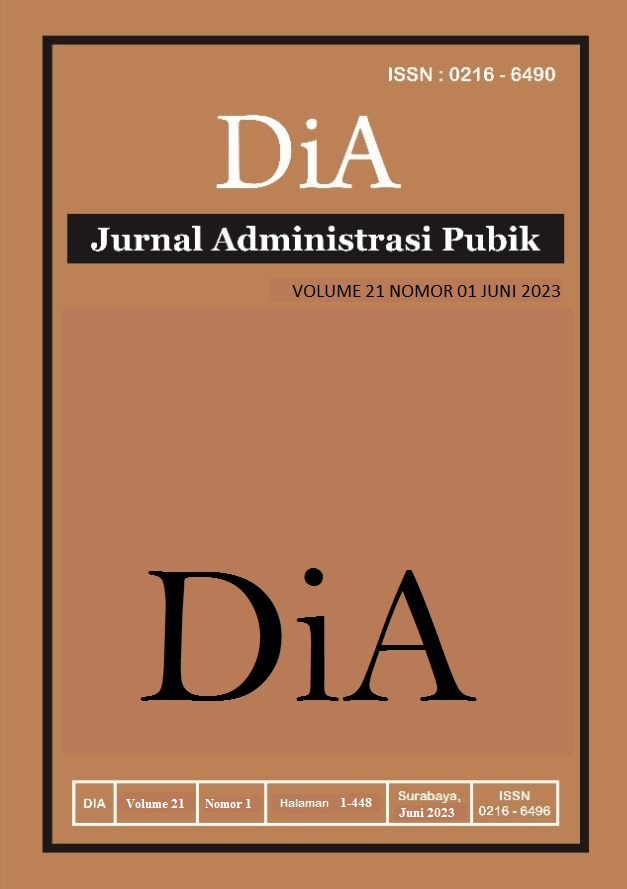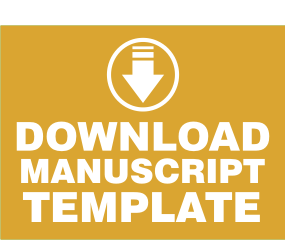INFORMATION SYSTEM POLICY INNOVATION FOR UNINHABITABLE HOUSES DATA COLLECTION PROGRAM (SIGAP-RTLH) IN GRESIK REGENCY
Abstract
The existence of poverty conditions results in inequality in the quality of life such as inadequate nutrition, equitable distribution of health, education and lack of comfort in the places they live in. Uninhabitable houses are those that do not meet the requirements and standards. So, the Gresik Regency Government made a policy in the form of an innovation of the Uninhabitable House Data Collection Program Information System (SIGAP-RTLH) which is an information system for the RTLH Data Collection Program based on the web so that it is able to see the distance and time of data collection as well as updating the data up to date. locus in Gresik Regency. The research process is by collecting secondary data through observation, research results that have been published in indexed journals, credible census data and mass media reports that have valid credibility, such as the official website of the Kemenpan-RB, DJPB Ministry of Finance, Housing and Settlement Areas. The innovation of SIGAP-RTLH includes how to collect data, how to submit and product data collection for RTLH which can be accessed through a website that can be accessed anywhere at any time at http://sigaprtlh.gresikkab.go.id/index.php/login. The data product resulting from the SIGAP-RTLH update can be accessed as data collection material at the relevant government agencies as a way to facilitate data collection and follow-up to facilitate the handling of RTLH in the issuance of Building Construction Permits. Another benefit is to produce complete, valid, disaggregated, centralized, identified, integrated, uptodate, and accountable data collections. Policy Innovation The SIGAP-RTLH program is easy to implement or redesign for other agencies by developing services using the concept of an information system and has been proven to be accurate and precise and effective because it has received an innovation award at the national level.
Downloads
References
Ardiansyah, H. E., & Rahmawati, D. (2021). Efektivitas Penyediaan Perumahan oleh Perumnas dalam Menangani Masalah Housing Backlog di Kabupaten Gresik. Jurnal Teknik ITS, 10(1). https://doi.org/10.12962/j23373539.v10i1.59278
Azmi, A. (2022, September 15). 6.000 Rumah di Gresik Tak Layak Huni, Pemkab Gresik Masifkan Program Bedah Rumah. Timesindonesia.Co.Id.
Badan Pusat Statistik. (2020). Rumah Tidak Layak Huni. Badan Pusat Statistik.
Carlos, J., José, N., Benavente, M., & Crespi, G. (2016). Policy Perspectives for Latin America and the Caribbean.
Edler, J. (2016). Handbook of innovation policy impact. Edward Elgar Publishing.
Edler, J., & Fagerberg, J. (2017). Innovation policy: What, why, and how. Oxford Review of Economic Policy, 33(1), 2–23. https://doi.org/10.1093/oxrep/grx001
gresikkab.bps.go.id. (2022). Jumlah Penduduk Miskin (Ribu Jiwa), 2019-2021.
gresikkab.go.id. (2021, November 9). SIGAP-RTLH GRESIK RAIH PENGHARGAAN TOP 45 INOVASI PELAYANAN PUBLIK TINGKAT NASIONAL. Gresikkab.Go.Id.
Ilmu, S., Negara, A., Ilmu, F., Ilmu, S., Negara, A., & Ilmu, F. (2019). Liza Alvini Sahrin Trenda Aktiva Oktariyanda Abstrak. 725–738.
Ismowati, M., & Subhan, A. (2018). Implementasi Program Pemberdayaan Sosial Kegiatan Rehabilitasi Sosial Rumah Tidak Layak Huni (Rtlh) Bagi Masyarakat Miskin Di Kabupaten Pandeglang. Transparansi Jurnal Ilmiah Ilmu Administrasi, 1(2), 194–205. https://doi.org/10.31334/trans.v1i2.384
jdih.maritim.go.id. (2022, April 1). Kabupaten Gresik Ditetapkan sebagai Kawasan Ekonomi Khusus. Jdih.Maritim.Go.Id.
Mardhanie, A. B. (2020). PENELITIAN RUMAH TIDAK LAYAK HUNI (RTLH) KABUPATEN BULUNGAN TAHUN 2017. Jurnal Kreatif : Desain Produk Industri Dan Arsitektur, 5(2). https://doi.org/10.46964/jkdpia.v5i2.41
menpan.go.id. (2022, April 12). Bangun Rumah Layak Huni dengan SIGAP-RTLH. Menpan.Go.Id.
Nawi, A., & Lestari, A. W. (2018). Implementasi Kebijakan Program Rehabilitasi Sosial Kecamatan Bumiaji Kota Batu. JISIP: Jurnal Ilmu Sosial Dan Ilmu Politik, 7(1), 11–16.
Nugroho, Riant. 2014. Publik Policy Teori, Manajemen, Dinamika, Analisis,Konvergensi, dan Kimia Kebijakan Edisi 5. Jakarta : Elex Media Komputindo.
Oktaviranti, S. A., & Oktariyanda, T. A. (2021). Efektivitas Program Bhakti TNI Renovasi Rumah Tidak Layak Huni (RTLH) di Komando Rayon Militer (Koramil) 0819/19 Prigen. Publika, 9(3), 69–80. https://doi.org/10.26740/publika.v9n3.p69-80
Pasolong, Harbani, 2008. Teori Administrasi Publik, Bandung : Alfabeta.
Rizal, Y., Haryo, D., & Christian, D. (n.d.). Chapter 4 - Innovation Policy in ASEAN.
Schot, J., & Steinmueller, W. E. (2018). Three frames for innovation policy: R&D, systems of innovation and transformative change. Research Policy, 47(9), 1554–1567. https://doi.org/10.1016/j.respol.2018.08.011
Wanzenböck, I., & Frenken, K. (2020). The subsidiarity principle in innovation policy for societal challenges. Global Transitions, 2, 51–59. https://doi.org/10.1016/j.glt.2020.02.002
Copyright (c) 2023 Indira arundina sari; Vidya Imanuari Pertiwi (Author)

This work is licensed under a Creative Commons Attribution-ShareAlike 4.0 International License.
The DiA journal allows authors to retain the copyright of their papers without limitation. Authors may grant publishers non-exclusive publishing rights to publish articles. Granting first publishing rights to publishers also qualifies as unlimited copyright (because there are no restrictions imposed by publishers on author copyright).










